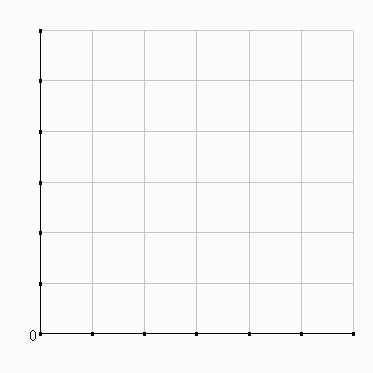| ? What is the economic
interpretation of the slope of a PPF?
Size of slope = the opportunity cost
of X in terms of Y. How is good y transformed into good x? |
 |
V. General equilibrium with competitive markets
B. Input
efficiency (IE)
(Frank: production efficiency)
1. The Edgeworth box for inputs
This concerns firms and their use of inputs.
Consider:
2 firms: i and j in 2 different industries
2 inputs: K and L
Each firm's initial endowment:
i: (Li, Ki)
j: (Lj, Kj)
Li + Lj = Lt
Ki + Kj = Kt
Do "Achieving input efficiency" worksheet
Lesson: if MRTSi <> MRTSj, input efficiency can be improved.
The firm with the higher MRTS values L more highly relative to K. Exchange should give that firm more L and less K.
2. Input efficiency and competitive markets
In practice, firms don't bargain much; they just go to the market and buy.
Unrestricted competitive markets promote input efficincy since producers face equal market-clearing prices for equivalent inputs
MRTSi = PL/PK = MRTSj
Main exceptions: input price
differentials due to factors such as
--trade unions
--resource immobility
--minimum wage laws with exempt sectors
Ex: International differences in PL/PK ratios, such as PLus > PKmex
As long as PLus > PLmex for unskilled labor, both coutnries can produce more by exchange
Restricted in practice: Note resistance:
US labor: wage will fall
Mex capitalists: return to K will fall
We've now addressed the how to produce and for whom
to produce questions.
All that is left is output efficiency
Output efficiency is the one efficiency we are used to seeing in supply and demand diagrams
Anytime
(1) P not = MC
(2) Qd not = Qs
we have some output inefficiency.
Problem with partial equilibrium: with a tax on DVDs,
you might be looking at the market for regular videos. Nothing seems wrong. But
maybe people rent more videos because they are discouraged from the DVD market.
Through general equilibrium analysis, you don't miss see this spillover
effect.
1. Achieving output efficiency
Concepts regarding PPFs
| ? What is the economic
interpretation of the slope of a PPF?
Size of slope = the opportunity cost
of X in terms of Y. How is good y transformed into good x? |
 |
MRT reflects MC of each good
Example: MCx=$20, MCy=$10
? O/Cx = ?
See handout
Key result: MRT = MCx/MCy
(1) Input efficiency and the PPF
 |
 |
Input efficiency => we are on the
PPF
--can't get more X without giving up Y.
MRTSx not = MRTSy => we are inside PPF.
Plot a lens and points at ends of lens, point inside lens.
(2) Exchange efficiency and the PPF
Example: a Robinson Crusoe economy (1
person)
Crusoe is both a consumer and producer
Instead of a budget line his trade-off is his PPF
| GoodX =
Coconuts GoodY = Firewood
MRS = MUc/MUf = 6 U=Ua ? Advice? Moving to b: MRS falls and MRT rises: |
 |
Does the preceding analysis carry over to an economy
with lots of people?
Yes: consider this:
With many consumers:
Can bring any single consumer out to PPF.
Each one becomes analogous to Robinson Crusoe:
Compare value to cost and make bargains.
For every consumer:
Optimal Q = Q* => MRS = MRT
Underproduction: Q<Q* => MRS > MRT => raise Q
Overproduction: Q>Q* => MRS < MRT => lower Q
2. Output efficiency and competitive markets
Again, in practice we have prices.
Unrestricted competitive markets promote output efficincy by ensuring that consumer prices reflect producer costs.
| MRS | = | Px/Py | = | MRx/MRy | = | MCx/MCy | =MRT |
| utility max'n |
perfect comp'n |
profit max'n |
End result: MRS = MRT
Counterexamples: Any situation which
--> output where value <> cost:
--taxes, subsidies
--monopolies
Example: VAT in Norway
See: Summary of efficiency conditions handout
Conclusion:
See "Testing for economic efficiency" worksheet
Competition is a powerful force for efficiency. But:
(1) sometimes we have market situations which keep us from getting to
the competitive output level
(2) sometimes the competitive output level is not the best place to be.
These are the situations we turn to next